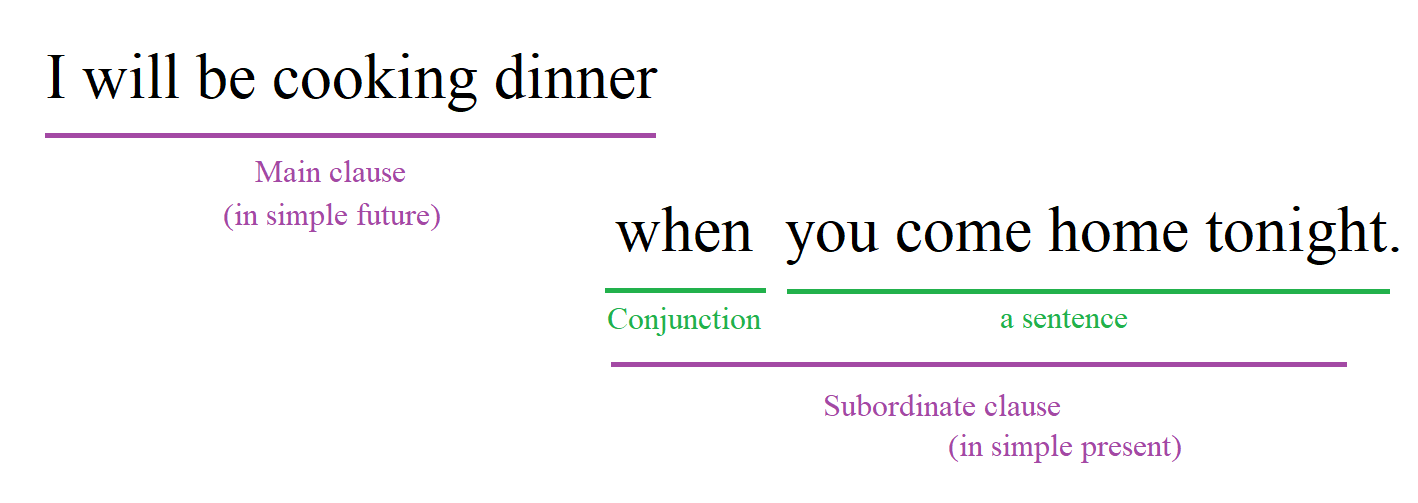Future Continuous Tense
- The future continuous tense is used to talk about actions that will be happening at a specific moment in the future.
- The structure for the future continuous tense is: Subject + will be + verb-ing (gerund) + (optional object).
The future continuous tense helps us talk about actions that will be happening at a specific moment in the future.
What is the Future Continuous Tense?
The future continuous tense describes actions that will be ongoing at a certain point in the future. It is often used to show that an action will be happening at a specific time or during a specific period in the future.
Grammar Rule: Subject + "will be" + verb-ing (gerund) + (optional object).
Example: I will be cooking dinner when you come home tonight.
This sentence means when you come home tonight (in the future), I will be in the middle of cooking dinner. Before you come home tonight, I will have started cooking dinner. After you arrive home tonight, I will still be cooking dinner. So, cooking dinner is a continuous action.

Also, you can use the future continuous tense to talk about your plan in the future. You can use it to talk about what you are planning to do at a specific moment or during a specific period in the future.
Examples:
-
I will be studying at 8 PM tonight.
Subject ("I") + "will be" + verb-ing ("studying") + object ("at 8 PM tonight").
-
She will be working on her project tomorrow afternoon.
Subject ("She") + "will be" + verb-ing ("working") + object ("on her project tomorrow afternoon").
-
We will be having dinner at 7 PM.
Subject ("We") + "will be" + verb-ing ("having") + object ("dinner at 7 PM").
Pratique este tópico com o AI English Tutor
AI English Tutor irá lhe ensinar a gramática e praticá-la com você em formato de conversação. Além disso, mais de 100 questões práticas sobre este tópico para consolidar sua compreensão.
Experimente ALULA gratuitamente em seu telefone ou tablet








Você tem alguma dúvida sobre esta lição? Pergunte na seção de comentários, abaixo.